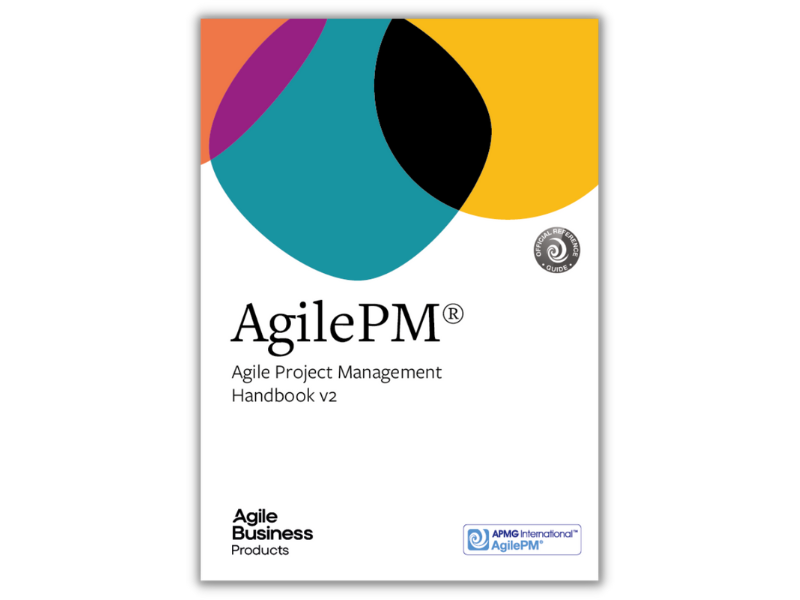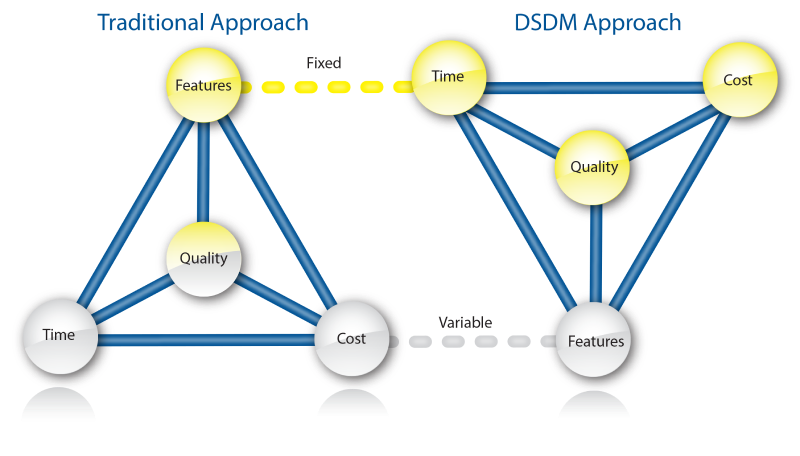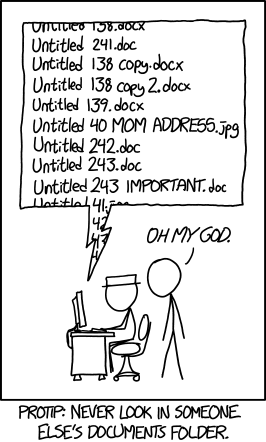4 Books That Shaped my Civil Service Career

Introduction
4 years into my career in the UK civil service, I am about to move to a new department and am taking the time to consider successes, challenges and lessons learned along the way. It’s been an incredible journey. I’ve been lucky to have worked with some of the most talented people and on some fantastic projects.
One of my most valued learning opportunities is in the form of a great book recommendation, especially when someone has taken the time to get to know the kinds of books that I would benefit from reading.
As I anticipate starting in my new role, I’d like to take the opportunity to pay some of these thoughtful recommendations forward. If you’re starting out in the public sector, or considering it, then you may find some of these texts to be helpful.
Some of the books will be useful to a broad audience of civil servants, though others may be more relevant to those who program as part of their job.
The Recommendations
This article is not sponsored by anyone. All of the books here have been read and integrated into my working practice to some extent.
I will work through a recommendation for each year of service in roughly chronological order - no ranking implied. Two of the recommendations are open source and free to anyone with internet access. The books appeal to distinct audiences, so I’ll try to set out who I think will find the content useful.
1. 7 Habits of Highly Effective People

The Seven Habits of Highly Effective People by Stephen R. Covey [1].
Just about anyone. But particularly, anyone whose job affords them the responsibility of directing their own time. Though there is also a lot to be applied to your everyday life, too.
I have a bit of a long history with this book. I was initially recommended it when working as a high school science teacher as part of a training event. For some curious reason I found myself resistant to picking it up. I think I felt too busy to dedicate myself to much reading in general at that point in my career and in retrospect, that was a mistake. This book has lots of really useful, actionable guidance for doing more of what matters most.
Starting from a point of personal effectiveness will set you up for success in the civil service, particularly as you develop proficiency in this skill, you may be expected to extend this effectiveness to others through the management of people and projects.
The highlight of the book for me is the famous Covey Quadrant:

This was adapted from the Eisenhower Matrix, named after the former president who had devised the rubric. Covey’s guidance was to spend time at the start of the day (or even better, at the end of the previous day) triaging your tasks against the dimensions of urgency and importance. And to be mindful that the everyday pressures may push you towards quadrant 1, while the most effective use of your time is generally within quadrant 2.
This approach seemed revelatory to me at the time of reading and would have certainly helped during the early stages in my education career. I readily applied this approach from the outset of my civil service career as a financial analyst and then later as a data science lecturer. As I progressed to managing a faculty of data science lecturers, I had spotted a team in another government department using an interactive team Covey Quadrant. This was a great opportunity to trial the approach with the faculty, who were extremely busy delivering technical training across public sector bodies while also needing to iterate and improve on the service offering.

This tool was exceptionally useful in helping manage demand. Conversations about feasible turnaround and how incoming priorities compared to pre-existing work were well-informed by a quick weekly update to the dashboard’s data (nothing more than updating a couple of columns in an Excel spreadsheet). This tool became my indispensible buddy during that period of high demand and I would thoroughly recommend putting something similar together if you find your team need help managing competing demands.
2. Agile DSDM Project Framework

The Dynamic Systems Development Method [2], an Agile project management framework, published by the Agile Business Consortium Ltd. The handbook is available to read for free on their website.
Anyone who needs to design, build or ship products, particularly software. So any of the following (not an exhaustive list):
- Data Scientist
- Data Engineer
- Data Analyst
- Software Developer
- Agile Coach
- Project Manager
- Scrum Master
- Product Owner
- Development Team Lead
- Software Developer
- QA/Test Manager
- Change Manager
- IT Manager
- Program Manager
- Business Architect
- Business Analyst
- System Architect
- Technical Architect
- Solution Architect
- UX/UI Designer
- User Researcher
- Interaction Designer
- Graphic Designer
- Portfolio Manager
- Digital Marketing Specialist
- Security Architect
A few years back, Agile seemed to be the in-vogue project management (PM) system, especially for digital products. It always vocal critics, but recently I sense it has crested a wave.
In my opinion, that’s a shame. The core principles of Agile I consider to be worth the effort:
- Customer-centric development
- Iterative delivery
- Flat development structure - succeed or fail together
A whole industry of consultation has grown around the popularity of Agile DSDM. Finding objective guidance on its implementation can be tricky to find, particularly if you wish to compare and contrast it with other PM frameworks.
There’s no right way to do Agile. It’s whatever you can make work with the resources at your disposal.
In some guidance, the core Agile principles become a bit obscured by process. An organisation’s interpretation of how Agile works often boils down to a vague understanding of role definitions and sprint ceremonies. If enough of your ‘Agile champions’ leave, you may find yourself with all the process and none of the benefits. I once heard that “Agile simply produces rubbish quickly”. I’d say that if an organisation is careless about its practice, that’s a definite possibility.
The reason I found Agile DSDM so influential, is that I benefited from working with people who really championed it. Colleagues who had grasped the pros and cons and were keen to help the rest of the team navigate the implementation of the Agile philosophy. I had benefited from taking this experience with me to other organisations that had not discovered Agile, and enjoying the benefits of these simple rules.
 Image © Agile Business Consortium Limited.
Image © Agile Business Consortium Limited.
I recall one of my directors stating something to the effect of,
“You can have something built quickly and with quality, but have to pay for it. Or it can be built with quality and cheaply, but you’ll have to wait for it. Or it could be built quickly and on a shoestring budget, but it’ll be rubbish.”
I’d say that’s a good interpretation of the Agile priorities. It was very motivating to hear this unsolicited endorsement of Agile principles from the leadership in my division. It felt that adoption of Agile had been firmly embedded and supported throughout all tiers within the hierarchy of my new role. This widespread adoption had contrasted with previous organisations that I had worked for, where Agile had been a new and unproved innovation.
The best Agile teams and practitioners are brutally exact with timescales. The Agile process involves phases of development punctuated by mini evaluation cycles. Feedback from the customers is then used to inform priorities in subsequent development phases. This frequent feedback to and from the customer keeps them highly engaged and giving them greater input into the quality of the final product. When managed well, Agile really works and your customers tell others that it works, too!
3. Data Visualisation: A Handbook for Data Driven Design
Data Visualisation: A Handbook for Data Driven Design by Andy Kirk [3].

Image © Data Viz Excellence, Everywhere Ltd
- Researchers
- Data Analysts
- Data Scientists
- Data Journalists
- Software Developers
- Business Intelligence Analysts
- Statisticians
- Graphic Designers
- Communications Professionals
- UX/UI Designers
- Marketing Analysts
- Educators and Trainers
I had been recommended this book during my time as a financial analyst working in a multidisciplinary team, some years before joining the civil service. A very talented graphic designer had recommended the book and lent it to me for a period. Some years later, I picked up a copy of the second edition.
This is a fantastic gift for anyone interested in data visualisation. Analysts can become a bit dismissive of data visualisation, considering it nothing more than learning your organisation’s house style. In fact, this ‘done in a day’ attitude can be quite prevalent and quality assurance of charts can be extremely opinionated, placing increasingly narrow guardrails around the kinds of visualisation an organisation would consider publishing. 5 minutes of flicking through this book is enough to blow any conservatism in this space out of the water.
This was the first book that I read where the ‘authoritative view from above’ that can so often be implicit in many visualisations was challenged. Representing uncertainty, discussing the creative process and intended outcomes of a visualisation effort, this book steps the reader from ideation to completion. The author also collates a rich, evocative compendium of fantastic data visualisations, inviting the reader to learn, question and wonder about the various topics they present.
If you’re reading on mobile, the interactive below may look better in landscape.
Straddling the intersection of art, design and analytics, this book provokes analysts to challenge tautologies and to think creatively.
4. ONS Duck Book
The Duck Book [4] is the warmly regarded pseudonym for Quality Assurance of Code for Analysis & Research (QuAC!), published by the UK Statistics Authority.
Anyone undertaking analysis in Government, here’s a non-exhaustive list:
- Economist
- Operational Research Analyst
- Social Researcher
- Statistician
- Data Scientist
- Data Analyst
- Data Engineer
- Digital, Data and Technology Analyst
- Policy Analyst
- Evaluation Specialist
- Behavioural Scientist
- Demographer
- Geospatial Analyst
- Intelligence Analyst
- Risk Analyst
- Performance Analyst
- Financial Analyst
- Business Intelligence Analyst
- Market Analyst
- Health Analyst
- Education Analyst
- Environmental Analyst
The duck book is a fantastic resource that continues to evolve. It has changed considerably since I first read it in 2020 and now has information relevant to managers of development teams, too.
This book was incredibly useful to me when starting to develop code for the civil service. I had come from smaller development teams in wider public sector organisations. Constraints in those organisations meant that lone-wolf development was commonplace. No code review and too much trust placed on individual analysts to judge the proportionate risk management for multiple projects.
Joining the civil service meant greater collaboration on analytical products. This book became my bible for 12 months while I got to grips with git, GitHub & best practice for collaborative development. It does a great job of giving a high level overview of all the important aspects and quality standards that a government analyst needs to have awareness of, without being overwhelming. You can read it quickly in an hour, yet its guidance is something that I have continually referred. Any developer new to the civil service would benefit from taking the time with this document.
I couldn’t discuss the Duck book without giving a special mention to the curated xkcd comic strips that the team have included at relevant points. It’s rare to get a sense of humour in a civil service publication and very much appreciated.

Special Mentions
These books are also great but perhaps have a more specialist readership or I am still in the process of reading and assimilating their concepts:
- The Turing Way [5] for championing open source and reproducible data science.
- AQUA book [6] by Government Analysis Function & H.M. Treasury, guidance on producing quality analysis for government.
- Deep Work by Cal Newport: [7] Be more intentional with how you allocate your working day.
- Complexity Economics and Sustainable Development: A Computational Framework for Policy Priority Inference by Omar Guerrero and Gonzalo Castañeda [8].
In Summary
In this article, I shared four books that influenced my journey in the UK civil service. These books provide a well-rounded toolkit for analysts, offering guidance on personal effectiveness, project management, data visualisation, and code quality assurance. They have been instrumental in shaping my career, and I hope they offer similar value to others embarking on a similar path.